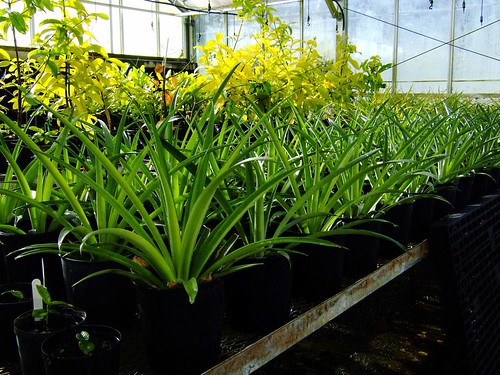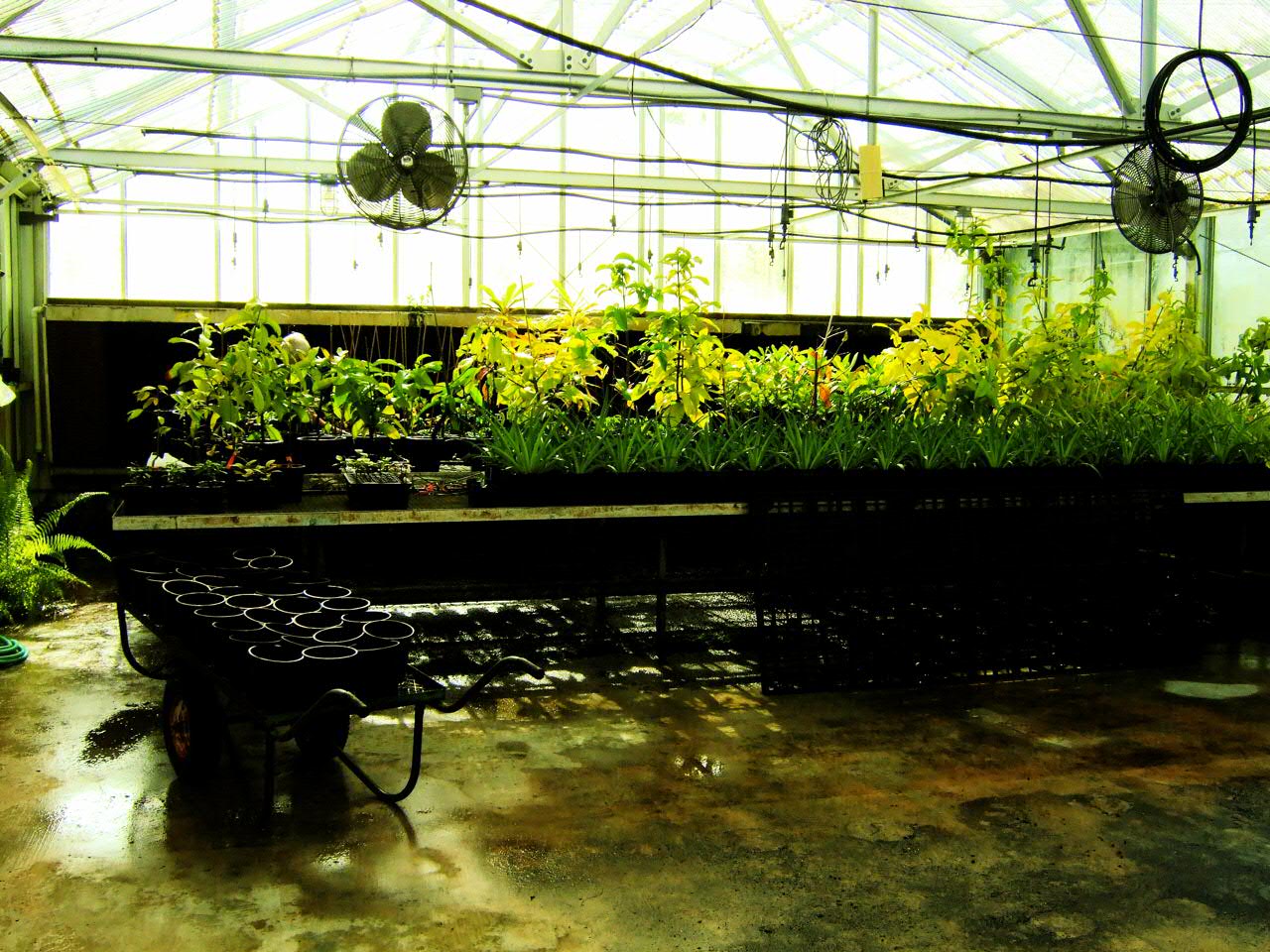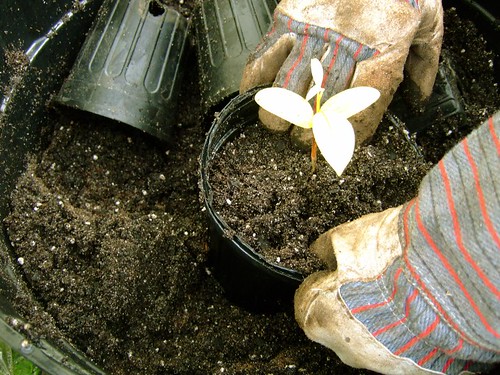This week we had a change of pace from working at the fruit pavilion. We met at the Fairchild grounds at 8:30 am and then drove to the Center for Tropical Plant Conservation (CTPC) to work with plants in the nursery. Located just minutes from the Fairchild grounds, CTPC is where much of the scientific work takes place:
The Center for Tropical Plant Conservation is dedicated to conserving tropical plants, driven by the imperative to avoid the extinction of species and their habitats. These activities are measured by the delivery of quantifiable conservation benefits to Fairchild's priority geographic investment regions (South Florida, Caribbean, oceanic islands, tropical Africa, and Madagascar) and plant groups (palms, cycads, tropical fruit and tropical trees). These have been selected because of conservation need, institutional expertise and history. Main activities include field exploration of important plant areas, conservation assessments, species recovery and direct support to in-situ conservation.CTPC is unique not only for its mission, but also because it's one of few botanic gardens with a molecular lab, operated in association with Florida International University. As well, CTPC has an extensive herbarium of Florida and Caribbean botany, with over 165,000 specimens, some of which have been posted online in this incredible Virtual Herbarium.
On Friday, we worked inside one of the greenhouses.
 This particular nursery serves the tropical fruit program. The floor was rather slippery!
This particular nursery serves the tropical fruit program. The floor was rather slippery! Jon-Mario planted each of these healthy young plants back in March from pineapple tops.
Jon-Mario planted each of these healthy young plants back in March from pineapple tops.Our task included repotting small sapodilla fruit trees to larger containers. Sapodilla is native to the Yucatan and was probably introduced to Florida from the Bahamas in the 1800s.
 Our work station inside the nursery. That wall against the back is actually a HUGE filter-like metal screen that drips water on a timer.
Our work station inside the nursery. That wall against the back is actually a HUGE filter-like metal screen that drips water on a timer.
It was quite humid inside the nursery, but with open doors the air circulated (we're very close to Biscayne Bay here, so there's breezes). After seeing this nursery and working at the Whitman pavilion at the Fairchild grounds, I think I'm getting a better sense of what tropical really means (climate-wise) from a horticultural perspective.
The sapodilla is found in Florida as far north as Merritt Island, but mostly is found from Miami to Key West. . . . The flavor is like a cocktail combining pear, peach, brown sugar, cinnamon and a little brandy. Sapodilla fruits are soft, sweet and have a beautiful smell when ripe.We had to set up our repotted sapodilla on these long, metal tables that roll side-to-side. Although the nursery has a sprinkler system, we tried to attach a dripper to each plant. The drippers are small hoses lined up on the middle of each table.From the Tropical Fruit Collection (scroll down)
 Our work station inside the nursery. That wall against the back is actually a HUGE filter-like metal screen that drips water on a timer.
Our work station inside the nursery. That wall against the back is actually a HUGE filter-like metal screen that drips water on a timer.It was quite humid inside the nursery, but with open doors the air circulated (we're very close to Biscayne Bay here, so there's breezes). After seeing this nursery and working at the Whitman pavilion at the Fairchild grounds, I think I'm getting a better sense of what tropical really means (climate-wise) from a horticultural perspective.








No comments:
Post a Comment